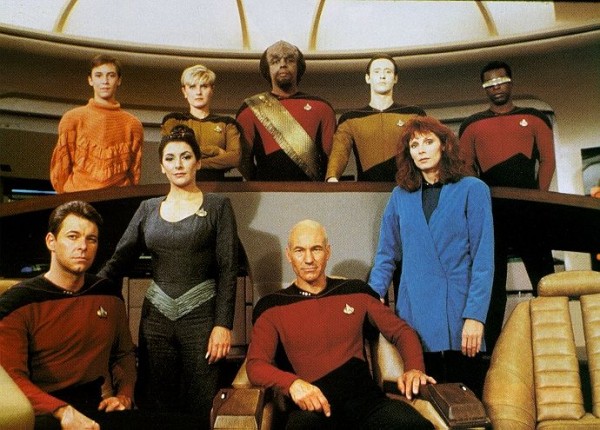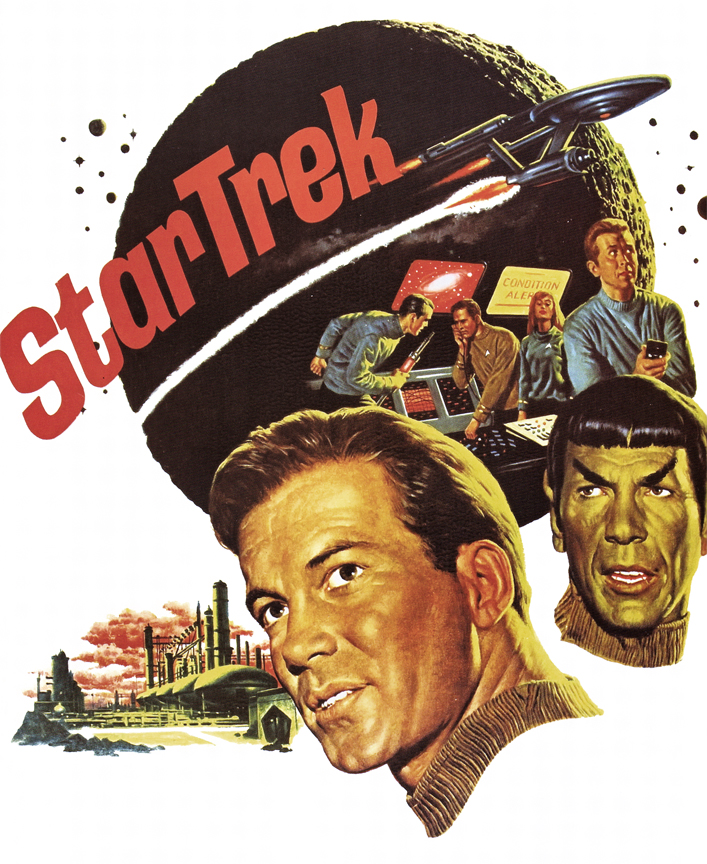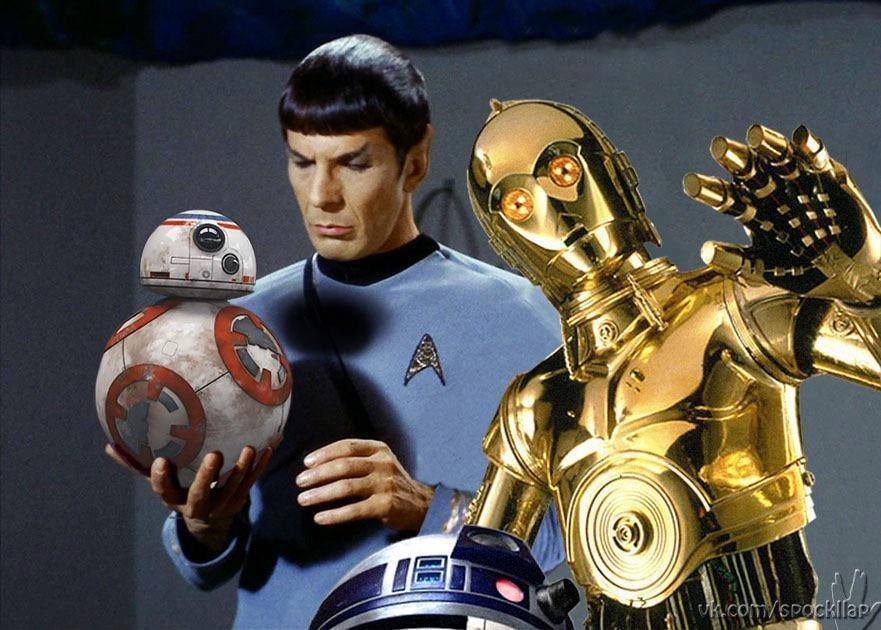
Facebook has been utterly determined this week to make me feel how swiftly time rushes by as we get older. First, it was regurgitating photos from my trip to Massachusetts last year. Then it was photos from my trip to Scotland two years ago. But today the almighty algorithm has decided to pull out the really big guns by showing me every post everyone in the world has been making about the anniversary of Star Trek: The Next Generation, which debuted on this date — are you ready for this? — 30 years ago.
Thirty. Years.
Can it possibly so long? That’s an entire generation in its own right, isn’t it? Longer than the span between the debut of the original Star Trek in 1966 and The Next Generation in 1987. Thirty years ago tonight, I had just turned 18. I was a couple weeks into my first quarter as a college freshman, still feeling very much like a little kid as I wandered around the big grown-up campus of the University of Utah. I was commuting to school in a yellow, four-doored Volkswagen Rabbit, and I was dating a cute brunette girl with bright blue eyes, but not seriously. I remember that she pissed me off by calling right in the middle of the two-hour Next Generation premiere; luckily, I was recording it on my trusty VCR so I could catch up later on the bit I lost while I was talking dirty with her on the phone.
I also remember that I wasn’t terribly impressed with TNG at first.The premiere wasn’t nearly as action-packed as the commercials had made it appear, and none of the cast seemed very comfortable with their roles. In fact, Sir Patrick Stewart was so stiff as the new captain that I mistakenly believed for a time that he was a lousy actor. Or perhaps he was just playing a lousy character. They were all lousy characters in those early days, all prone to shouting while delivering lots and lots of expository dialog that moved the plots along, but did little to deepen the characters themselves. There wasn’t much chemistry between the actors either; the warmth and camaraderie that was such a notable feature of the original 1960s Star Trek was sorely lacking.
Speaking of the original series (TOS, to those of us who are “of the Body”), TNG had a weirdly schizoid relationship with its progenitor until well into its second or possibly even third season, which, as a lifelong fan of the original, I found deeply frustrating. On the one hand, TNG seemed desperate to establish its own identity apart from the adventures of the first Starship Enterprise, which was understandable, but it went so far out of the way to avoid mentioning any characters or events from TOS that the omission called attention to itself, even as the show was cannibalizing story ideas from the original. (The second episode, “The Naked Now,” was an almost beat-for-beat remake of the original series segment “The Naked Time,” which was either really gutsy or really stupid considering that TOS was still in reruns at that time, and there was a good chance everyone had seen “The Naked Time” very recently. Not that true Trekkies didn’t have it memorized anyhow.)
TNG was preachy, too. Oh, lord, was it preachy. Star Trek had always delivered social messages along with the space-opera, of course, but rarely so heavy-handedly as TNG was in that first season. It seemed like every single episode included an aside where someone wondered how humanity had survived the barbarous 20th century, or pointed out how much more evolved human beings were in the 24th century. It was tedious and condescending, and frankly, it got to be a little insulting at times.
Hell, I didn’t even like the Enterprise-D at first. (A note for non-Trekkies: the Enterprise flown by Captain Kirk and company carried the registry number NCC-1701; when it was destroyed in one of the feature films, it was replaced by a new Enterprise — actually the same model with a new paint job — and the letter “A” was added to differentiate it from the earlier one: NCC-1701-A. The TNG Enterprise was supposedly the fifth starship of that name, designated NCC-1701-D.) The ship’s proportions looked all wrong to me. The saucer-shaped primary hull was too long and wide compared to the compact lower section, making it appear both top- and nose-heavy, and the ship’s relatively flat side profile suggested to me that it had been stepped on by some cosmic giant and squashed. The interior sets, meanwhile, were downright boring, all beige carpeting and flat lighting, reminiscent of a nice but sterile hotel lobby, right down to the knick-knacks from Pier One.
I was certain the show wouldn’t last beyond its first season.
And yet, it did last, eventually running seven years, spawning four feature films after that, and unquestionably paving the way for the Star Trek franchise to become the cultural juggernaut it was during the ’90s, and is attempting to become again today. I continued to watch despite my early misgivings, although I’m not sure if it was in the hope that the show would improve, or out of morbid curiosity to see just how badly it was going to flame out. Either way, I endured every episode of that shaky first season. My viewing was a bit more sporadic during the second year, but starting with the third, TNG seemed to have found itself at last… and I finally began to consider myself a fan. In the end, I grew to quite like the crew of Enterprise-D and the actors who played them. There are some individual episodes I would hold up as some of the best television of its era, certainly equal to the best of TOS. (For the record, I’m thinking of “The Best of Both Worlds, Part 1,” “Family,” “The Inner Light,” and “Tapestry.”) I shed a tear when the series ended on the perfect emotional gracenote. And I even developed a soft spot for that strangely flattened starship too, enough that it pissed me off when she was destroyed in the TNG cast’s first big-screen outing, Generations.
Even so, to this day I am baffled by those fans who consider TNG superior to TOS. I know there are even people, both fans and “civilians,” for whom TNG is Star Trek. It’s the show that first comes to mind for these people when they hear the words “Star Trek.” Unapologetic old-school Trekkie that I am, that really grates on me. I suppose I can’t blame younger viewers who grew up with TNG the way I did with TOS, but I know people my age who for some reason champion Picard over Kirk, and that just makes no sense to me. Because while I do like TNG, I love TOS. For me, it’s overall far more dynamic, far more fun, far more meaningful, and frankly far more timeless, in spite of the outdated visual effects and miniskirts. (Note that I said “overall”; you can always cherry-pick specific example to prove or disprove my points.) I’ve recently been rewatching TNG and while it’s nice to revisit it again after quite a few years away — I’ve found it holds up pretty well, and in some cases is better than I remember — I just can’t see myself ever enjoying the show over and over to the point of memorization, the way I still enjoy the 1960s Star Trek. For me, it will forever be the spin-off. That’s a term you don’t hear much anymore; in the modern-day franchise model, something like TNG is thought of as a continuation. But in the old days, it was a spin-off, a derivative. It was a very good derivative, and like I said it did find its own voice eventually… but it was still a derivative.
However, time has a way of veiling just about anything with nostalgia, and when I think back three decades to a September night in 1987 and picture myself sitting on the edge of my chair with the VCR remote in my hand (so I could screen commercials out of my recording), my knees bouncing with anticipation, I can’t help but smile. It was such an outlandish idea back then, a whole new Star Trek with a whole new cast, set 70 years after the first Star Trek. I think the only thing my 18-year-old self would’ve found more unlikely would be more Star Wars movies, or a sequel to Blade Runner…
Save
Save
Save
Save
Save
Save
Save










